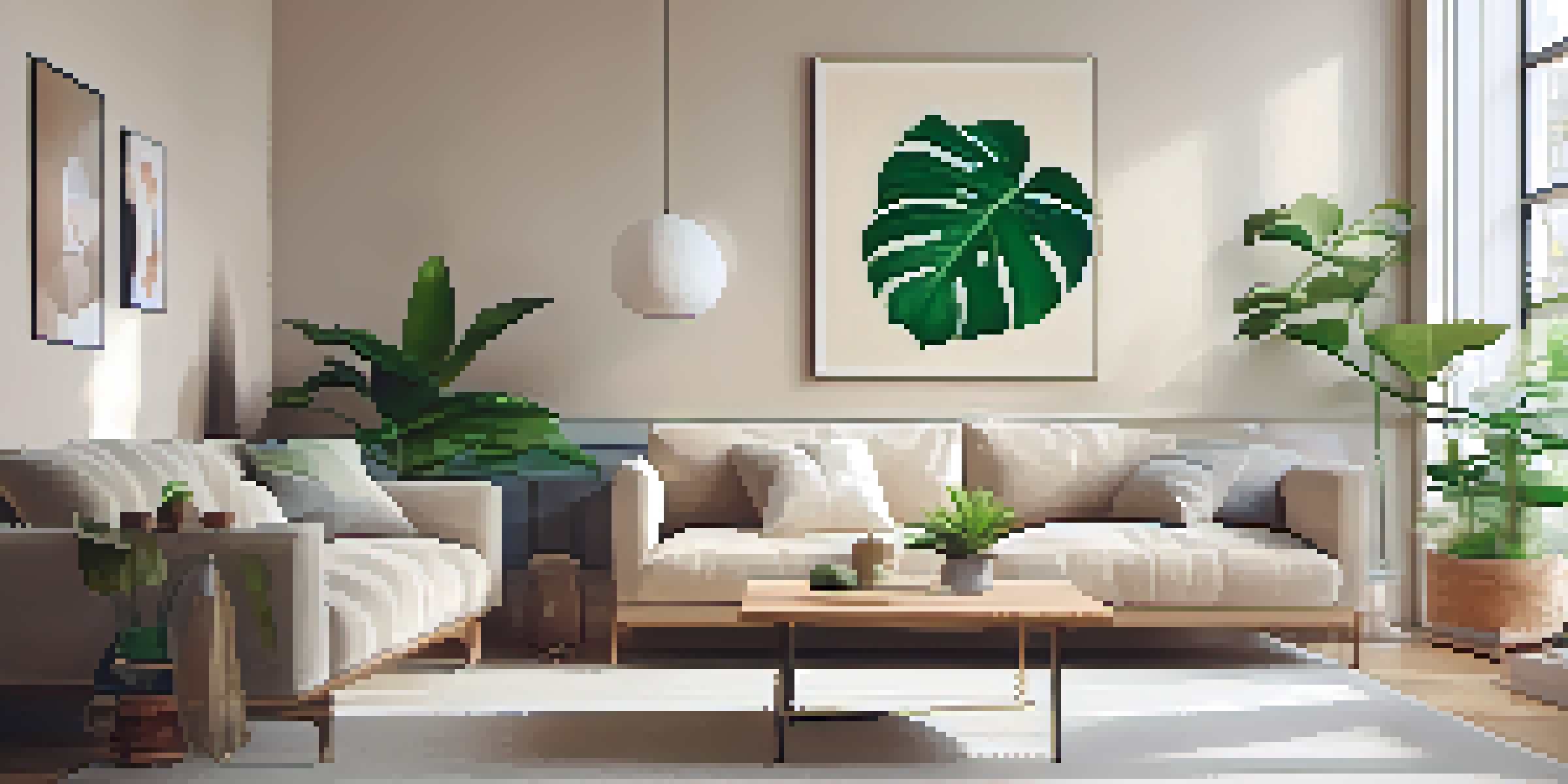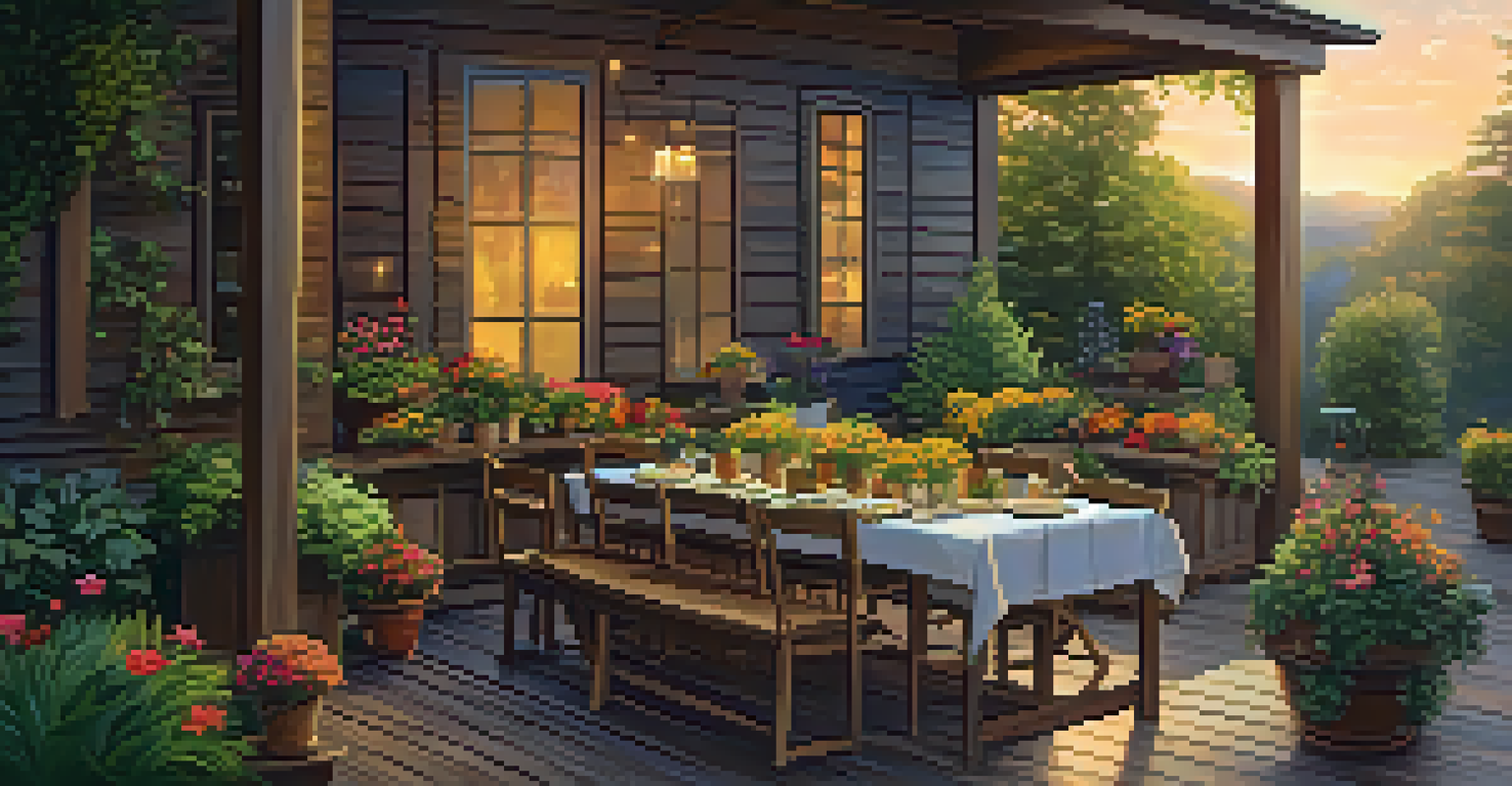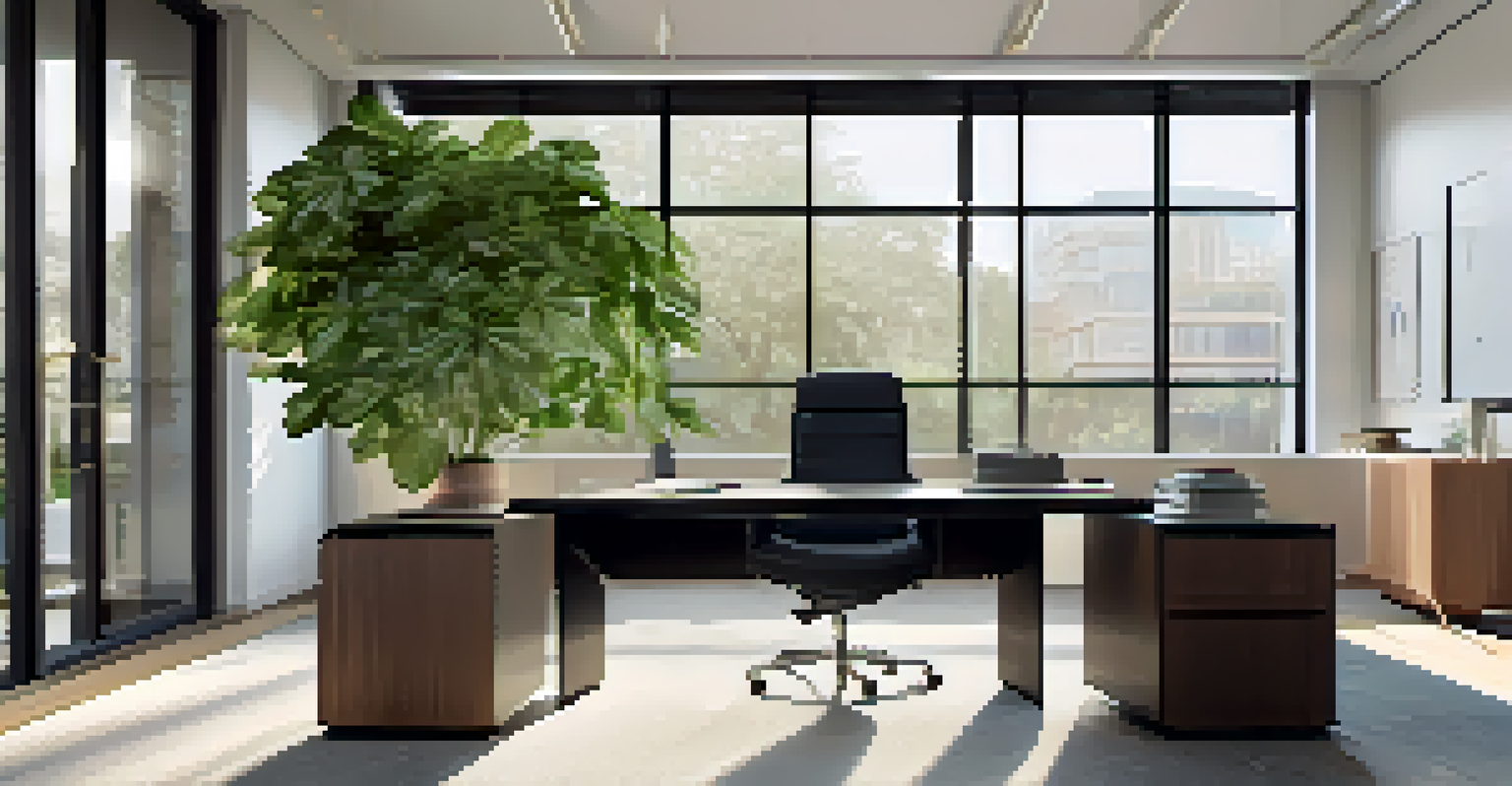The Role of Foliage in Creating Visual Design Balance

Introduction to Foliage in Design Balance
Foliage, or plant life, plays a crucial role in visual design, creating a sense of balance and harmony. Just like a well-composed photograph, the right placement of greenery can transform a space, drawing the eye and creating focal points. By understanding how foliage interacts with other design elements, we can harness its power to enhance any environment.
The best design is a balance between form and function, a harmony of elements that creates a cohesive whole.
Visual balance is all about distributing visual weight across a composition. Foliage can soften sharp edges and introduce organic shapes, which can help to counterbalance more rigid elements like furniture or structures. This balance not only makes a space more aesthetically pleasing but also contributes to a sense of calm and tranquility.
When we incorporate plants into our designs, we invite nature inside, creating a connection that resonates with people. Whether it’s a vibrant potted plant on a desk or a sprawling green wall, foliage has the ability to breathe life into a room, making it feel more inviting and balanced.
Understanding Visual Balance in Design
Visual balance is a principle that refers to the distribution of visual weight within a design. It can be symmetrical, where elements are mirrored on either side, or asymmetrical, where different elements create balance through contrast. Understanding this principle helps designers create spaces that feel stable and cohesive.

Incorporating foliage allows designers to play with both types of balance. For example, a large tree on one side of a room can be balanced by a cluster of smaller plants on the opposite side. This interplay between different sizes and shapes creates a dynamic yet harmonious design.
Foliage Enhances Visual Balance
Incorporating plants into design creates harmony by softening rigid elements and inviting nature indoors.
Moreover, visual balance isn't just about aesthetics; it affects how people feel in a space. A balanced design invites engagement and relaxation, while an unbalanced one can lead to discomfort or distraction. Therefore, using foliage thoughtfully can significantly enhance the overall experience of a space.
Foliage as a Focal Point in Design
Foliage can serve as a powerful focal point in any design scheme. When strategically placed, a large, lush plant can draw attention and become a conversation starter. This not only elevates the design but also encourages people to interact with their environment.
Nature does not hurry, yet everything is accomplished.
Think of a vibrant monstera plant in a minimalist room; its bold leaves contrast beautifully against the simplicity of the space, creating an eye-catching focal point. This not only enhances visual interest but also creates a natural flow that guides the viewer’s attention.
By incorporating foliage in this way, designers can create a sense of intrigue and depth. A well-placed plant can break up monotonous lines and add layers to the overall design, making it feel more complete and balanced.
The Impact of Color in Foliage Designs
Color is a vital part of any design, and foliage can introduce refreshing hues into a space. Different plants offer a range of greens, blues, and even splashes of floral colors that can either complement or contrast with existing decor. This color interplay is essential for achieving visual balance.
For example, pairing a deep green plant with pastel-colored furniture can create a soothing palette that feels harmonious. Alternatively, vivid flowers can inject energy into a more muted space, drawing the eye and enlivening the atmosphere.
Foliage as a Focal Point
Strategically placed greenery can draw attention and elevate the overall aesthetic of a space.
Ultimately, the colors found in foliage can dictate the mood of a space. By carefully selecting plants that align with the desired emotional tone, designers can use foliage to enhance visual balance and create environments that resonate with those who inhabit them.
Textural Variety and Foliage in Design
Foliage isn't just about color; it also introduces texture, which is essential for creating visual interest and balance. Different leaves, from the smooth surface of a rubber plant to the jagged edges of a fern, can add layers of texture to a design. This variety helps to break up monotony and engage the viewer’s senses.
In a design context, mixing textures can lead to a richer experience. For example, pairing a sleek modern chair with a bushy, textured plant can create a delightful contrast that draws attention and enhances the overall balance of the space.
Textures can also evoke different feelings. Soft, plush foliage can create a cozy atmosphere, while spiky or architectural plants can bring a sense of sophistication. By thoughtfully incorporating a variety of textures through foliage, designers can achieve a balanced and inviting environment.
The Role of Scale in Foliage Design
Scale refers to the size of elements in relation to each other and the overall space. When integrating foliage into design, considering scale is crucial for achieving balance. A towering plant can dominate a small room, whereas tiny plants may get lost in a vast space.
Appropriate scaling can create a sense of proportion and harmony. For instance, using large plants in spacious areas can fill voids and ground the design, while smaller plants can complement furniture and décor without overwhelming the space.
Seasonal Foliage for Freshness
Rotating plants according to the seasons keeps designs engaging and visually balanced throughout the year.
By being mindful of scale, designers can create spaces that feel well-planned and intentional. This careful consideration ensures that foliage contributes positively to the overall visual balance, enhancing the room’s functionality and aesthetic appeal.
Incorporating Foliage for Seasonal Balance
Foliage allows for dynamic design, adapting to seasonal changes and trends. Different plants thrive in varying conditions, and their colors and textures can shift throughout the year, offering fresh perspectives on visual balance. This adaptability can keep a space feeling lively and relevant.
For example, incorporating seasonal plants like poinsettias during winter or vibrant sunflowers in summer can bring a refreshing update to a design scheme. This not only keeps the environment engaging but also reflects the changing seasons, enhancing the overall aesthetic.

Moreover, rotating plants seasonally can keep the design feeling new and balanced over time. This approach encourages engagement with the space, allowing inhabitants to appreciate the beauty of change and the role foliage plays in maintaining visual harmony.